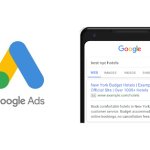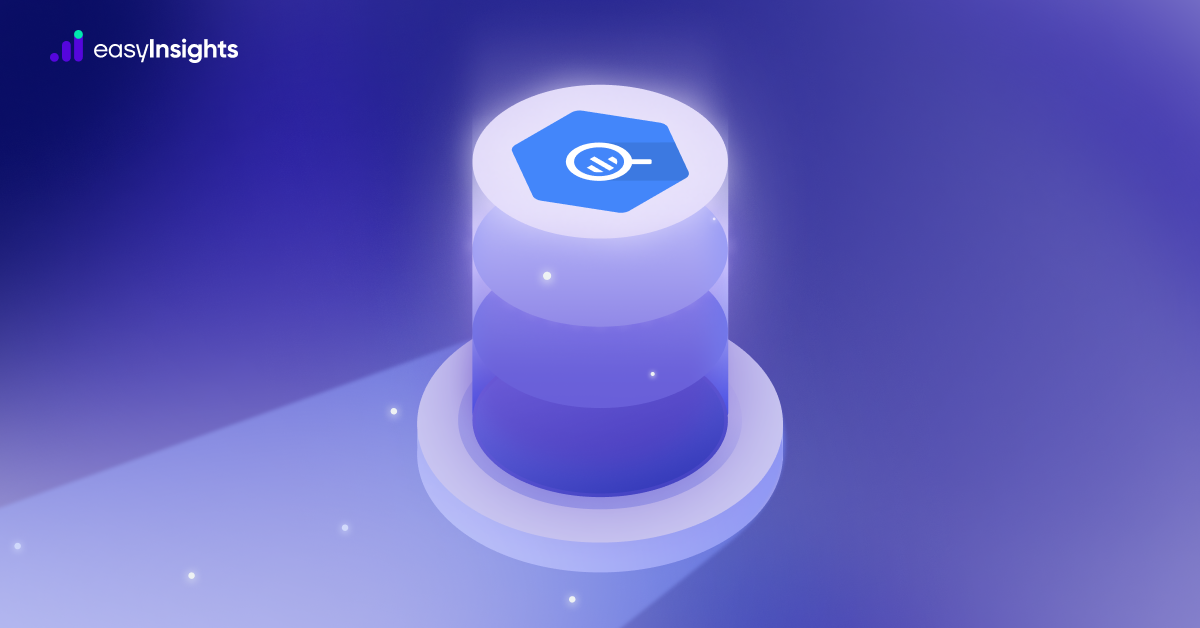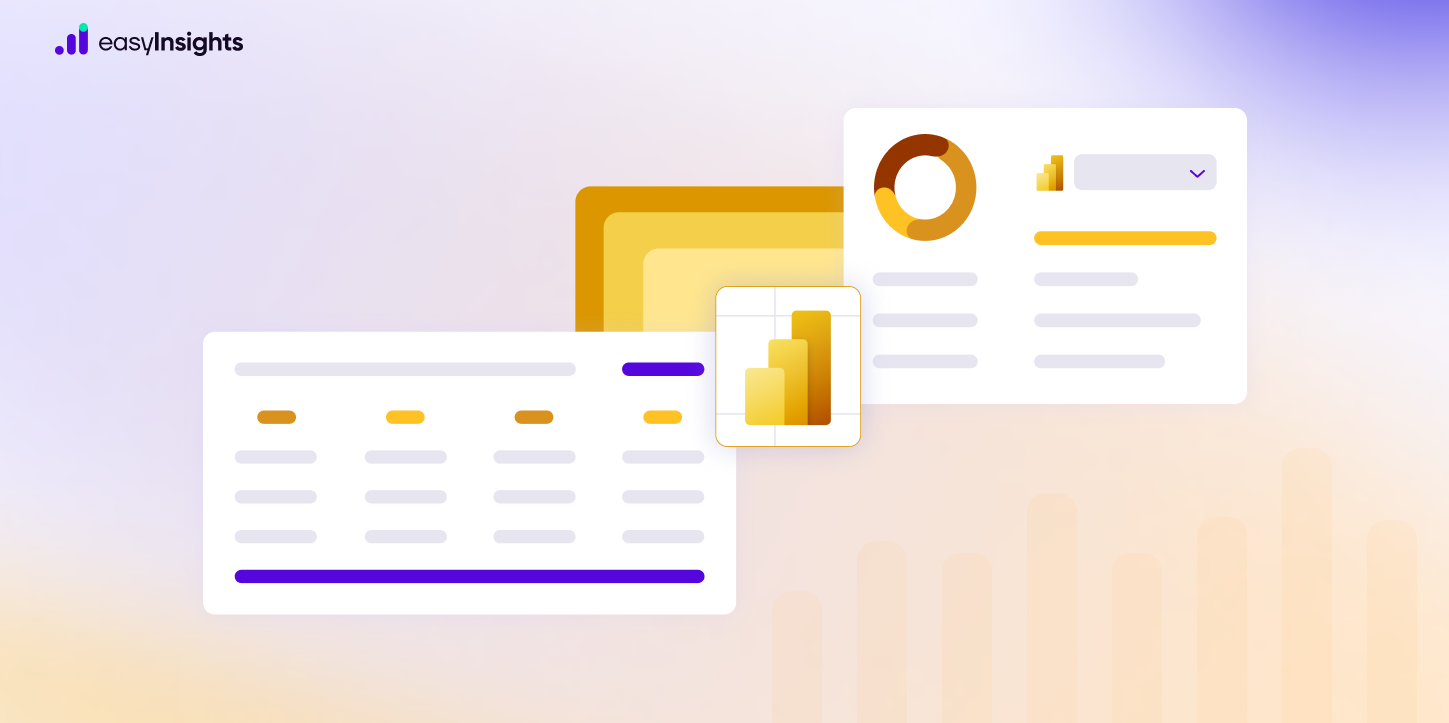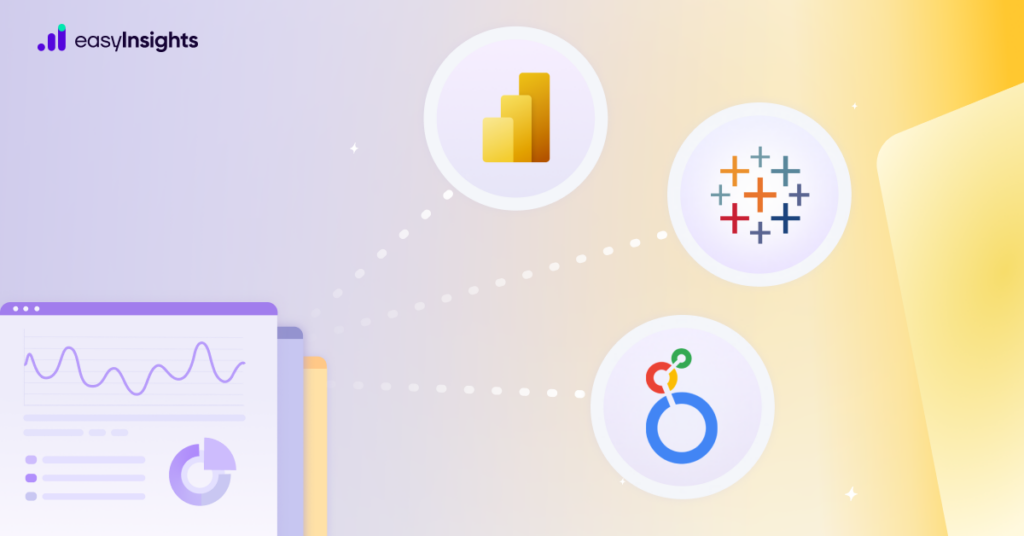
Business intelligence (BI) tools are now essential to every digital marketer’s expansive toolset. It is impossible to imagine business and marketing analytics without a BI tool being in action owing to the rise of self-service solutions. Self-service BI tools make it easier for non-tech users like marketers to collect and process large amounts of unstructured data from internal and external sources, analyze it, and prepare reports, dashboards, and data visualizations.
So, which one should you choose for your digital marketing reports? Although there are plenty of options to choose from, a quick research session on Google will reduce your options to just a handful – Microsoft Power BI, Tableau, and Google Looker Studio, for they are some of the most popular products and have a huge existing user base.
Microsoft Power BI and Tableau are two leading BI tools, and with their enormous aggregate market share of more than 56%, they dominate the business intelligence software industry. Looker Studio, however, is entirely cloud-based and uses a distinct machine-learning model, making it a promising option for specific use cases.
In this blog, we will take a complete look at these top three business intelligence tools. We will explore their features, pricing, and limitations so you can pick a BI tool that suits your marketing data workflow the most. So let us dive straight in.
Also read: How to connect Tableau, Power BI and Google Data Studio with Postgres?
Jump ahead to:
Power BI vs Tableau vs Looker Studio: Table of Comparison
Let us now see a head-to-head comparison between Power BI, Tableau, and Looker Studio.
| Points of Difference | Power BI | Tableau | Looker Studio |
| Ease of Use | Moderate learning curve. | Moderate learning curve. | Steeper learning curve. |
| NLP Search | Yes | Yes | Yes |
| Data Connectivity | Data connectors and API. | Data connectors and API. | Data connectors are missing. |
| Data Visualization | Interactive visualization templates with many customization options. | Perfect for data visualizations due to plenty of customizable templates. | Simple visualization options with limited customizations. |
| Collaborative and Sharing Features | Available in Pro license and above. | Available on all versions. | Requires Looker Studio Pro license. |
| On-Premise Deployment | Yes | Yes | No |
| Cloud Deployment | Yes | Yes | Yes |
| Ideal for | Small and medium businesses | Large scale businesses | Looker data studio is ideal for small & medium businesses, and businesses who are using Google Big Query. |
| Pricing | – Pro-license starts at $9.99 per user/month. – The Premium license starts at $20 per user/month. Premium license for the whole organization starts from $4,995/month. – Both Pro and Premium versions come with a 60-day free trial. | – Creator license costs $70 per month/user and is billed annually. – Teams require a single Creator to serve Explorers ($35-$42 per month) and Viewers ($12-$15 per month). – Embedded Analytics for white-label solutions is priced on a case-by-case basis. – All users must opt-for Einstein Discovery for predictive analytics at $25 per month per user. – Add-ons are priced separately. | It is a free tool—you do not need to pay to set it up. However, if you want to get data from platforms other than Google, you may have to pay for a third-party connector provider. |
Microsoft Power BI Overview
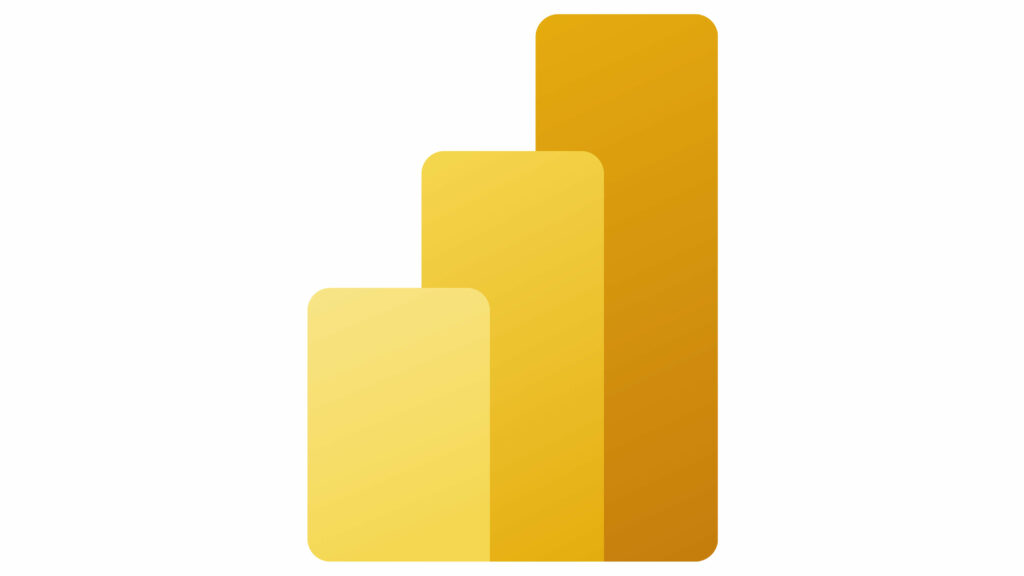
Microsoft Power BI is the most popular business intelligence tool out of the three, having a market share of around 36%. It is a powerful BI tool that enables data analysts and marketers to get answers to their ad hoc queries and perform self-service, enterprise-level analytics.
Microsoft Power BI is available for business as a desktop application and an online service. So, depending on your need, you can access its features on your workstation or any device with a web browser and an internet connection. In addition, Power BI fits right in the existing Microsoft ecosystem of services like Azure and Microsoft 365 for a seamless experience.
Features of Microsoft Power BI
Here is the detailed list of features you get with Microsoft Power BI:
- A built-in query tool with natural language processing capabilities allows users to ask questions in conversational language.
- Plenty data visualization options with a drag-and-drop UI makes it easier to create customizable and interactive dashboards and reports.
- An abundance of data connectors and APIs to securely import data from on-premise sources, cloud storage, and business solutions like Google Analytics, Salesforce, etc.
- Seamless integration with Microsoft 365 cloud service enables resource sharing and collaboration.
- Cybersecurity measures like end-to-end encryption, real-time access monitoring, and access permissions are also present.
- Allows users to create machine learning models to extract insights from structured and unstructured data.
Limitations of Microsoft Power BI
Here are some limitations that may hinder your experience when using Power BI:
- A non-tech marketer will need a team of DAX (Power BI’s proprietary formula and query language) experts.
- As the volume of data increases, processing time increases significantly.
- The only way to use Power BI’s desktop version on macOS is through a virtual machine setup, which can hinder your experience.
- Users need a Premium license for sharing assets outside their organization.
Pricing
Microsoft Power BI is available with the following licensing options:
- A free-to-use desktop version is available with limited features.
- Pro-license starts at $9.99 per user/month with the ability to share assets and collaborate with teammates.
- The Premium license starts at $20 per user/month with all features from the Pro version, plus the advanced AI capabilities and enterprise-level analytics. Premium license for the whole organization starts from $4,995/month.
- Both Pro and Premium versions come with a 60-day free trial.
Tableau Overview

Tableau is the oldest BI tool out of the three solutions we are discussing and holds a market share of around 20%. It was initially launched as a desktop application, but now it is also available as a cloud service.
Tableau competes directly with Power BI, and its feature set makes it a perfect BI tool for users looking to shift from Power BI. It allows users to create complex dashboards and reports but offers many customizations to create aesthetically pleasing visualizations.
Features of Tableau
You get these features with Tableau:
- Simple drag-and-drop interface and an extensive visualization library to pick from.
- No-code AI and machine learning-powered predictive models and recommendations.
- The natural language query builder allows users to extract insights using conversational language.
- Automatic data refresh and live queries to provide real-time insights.
- Support for importing geographic data to create interactive maps.
- There are numerous integrations with third-party tools.
- Connects to multiple data sources, including databases and data warehouses, flat files, big data, and the cloud.
- Users can choose to deploy Tableau in the cloud, or on-premises.
- Works on both Windows and Mac.
- A large community, online resources, and tutorials are available.
Limitations of Tableau
Let us look at some drawbacks of using Tableau:
- The biggest drawback of Tableau is that it cannot handle raw data. You must import data that has already been cleaned and harmonized before you can visualize it in Tableau.
- Besides the basics, non-power users like marketers will need the training to use advanced features.
- Due to the abundance of add-ons, per-user pricing can be confusing, making it difficult to pick the best license for your tasks.
Pricing
- Tableau bills its Creator license annually, costing $70 per month/user.
- Teams require a single Creator to serve Explorers ($35-$42 per month) and Viewers ($12-$15 per month).
- Embedded Analytics for white-label solutions is priced on a case-by-case basis.
- All users must opt-for Einstein Discovery for predictive analytics at $25 per month per user.
- Add-ons are priced separately.
Google Looker Studio Overview
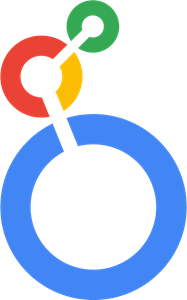
Google Looker Studio is a cloud-based BI platform that allows users to create and share interactive data visualizations and reports. If you are familiar with Google Data Studio, its new address is Looker Studio. Looker was a standalone BI tool before Google acquired it and unified it with its own BI tool, the Google Data Studio.
Like Power BI and Tableau, Looker Studio integrates with various data sources, including databases and data warehouses, and allows users to create visualizations and dashboards using a drag-and-drop interface.
Features of Google Looker Studio
Here is the list of features available in Looker Studio:
- The natural language query feature allows users to extract insights from their data using natural language.
- A data modeling layer allows users to add a semantic layer to their data for easier analysis.
- The drag-and-drop interface facilitates creation of custom dashboards and visualizations with ease.
- Includes collaboration features like report and dashboard sharing.
- Data governance features allows users control access to data.
- Integrates with many data sources, including databases, data warehouses, and cloud services.
Limitations of Looker Studio
If you plan to use this, here are some limitations of this BI tool you must consider:
- Looker Studio does not support raw data, so organizations need engineers to set up LookML and support non-tech users.
- Users unfamiliar with data modeling and warehousing concepts may face a steeper learning curve.
- With only a 6% market share, it may be difficult to find online communities, forums, and resources.
- Customization options for visualization are very limited.
Pricing
Google offers Looker Studio with differential pricing depending on deployment and customizations users opt for.
The Verdict
Power BI, Tableau, and Looker Studio are very powerful business intelligence tools, but each takes the lead in certain use cases. So, which BI platform you should opt for depends on how you plan to utilize it in your marketing efforts.
For example, Power BI is ideal for marketers using the Microsoft ecosystem who want to create complex visualizations. Tableau is perfect for marketers who want to create visualizations easily but make them look aesthetically pleasing for their reports and presentations. In contrast, Looker Studio can be an excellent option for marketers working in large firms with an adequate marketing budget. It is a free tool—you do not need to pay to set it up. However, if you want to get data from platforms other than Google, you may have to pay for a third-party connector provider.
No matter the BI tool you pick, you must clean your data before you can visualize it. To help you do that, we have designed EasyInsights, a next-gen data analytics tool. EasyInsights allows you to collect your marketing data from different platforms, clean and harmonize it, and export it to any BI tool for visualization. Make EasyInsights a part of the BI data pipeline, and optimize your marketing strategies with ease. Visit EasyInsight.ai for more information.
A brief Introduction About EasyInsights
As a marketer you may need to import data from various ad platforms to create a comprehensive marketing report. Investing countless hours each day to collect and maintain data in a Postgres database is a tedious and time-consuming task that results in unnoticeable errors. Logging in to multiple platforms and exporting, transforming, and uploading data to BI tools consumes more than 40% of marketers’ time.
This is where a tool like EasyInsights can help! EasyInsights’ allows you to fully automate and secure data transfers from any source without having to rewrite the code. It allows you to not only export and load data but also transform and enrich it so that it is ready for analysis. Although you can manually connect the tools, EasyInsights makes it easier to use any BI tool by allowing you to pull data from various data sources and integration tools.
You can connect all your data sources to EasyInsights with a few clicks, and access your transformed business ready data in any BI tool in a flash.
Benefits Of Using EasyInsights
- Completely automated: The EasyInsights platform is simple to set up and requires little maintenance.
- Real-time Data Transfer: EasyInsights offers real-time data migration so that you always have analysis-ready data.
- 100% Complete & Accurate Data Transfer: EasyInsight’s robust infrastructure ensures dependable data transfer with no data loss.
- Scalability: EasyInsights has built-in integrations from all the popular marketing data sources, allowing you to scale your data infrastructure as needed.
- Generate Insightful reports: EasyInsights helps in generating useful reports. Use reports on Google Sheets to make faster data decisions, or consume it from your inbox.
Book a demo! Talk to our product expert to automate your daily reports and dashboards within a flash.


